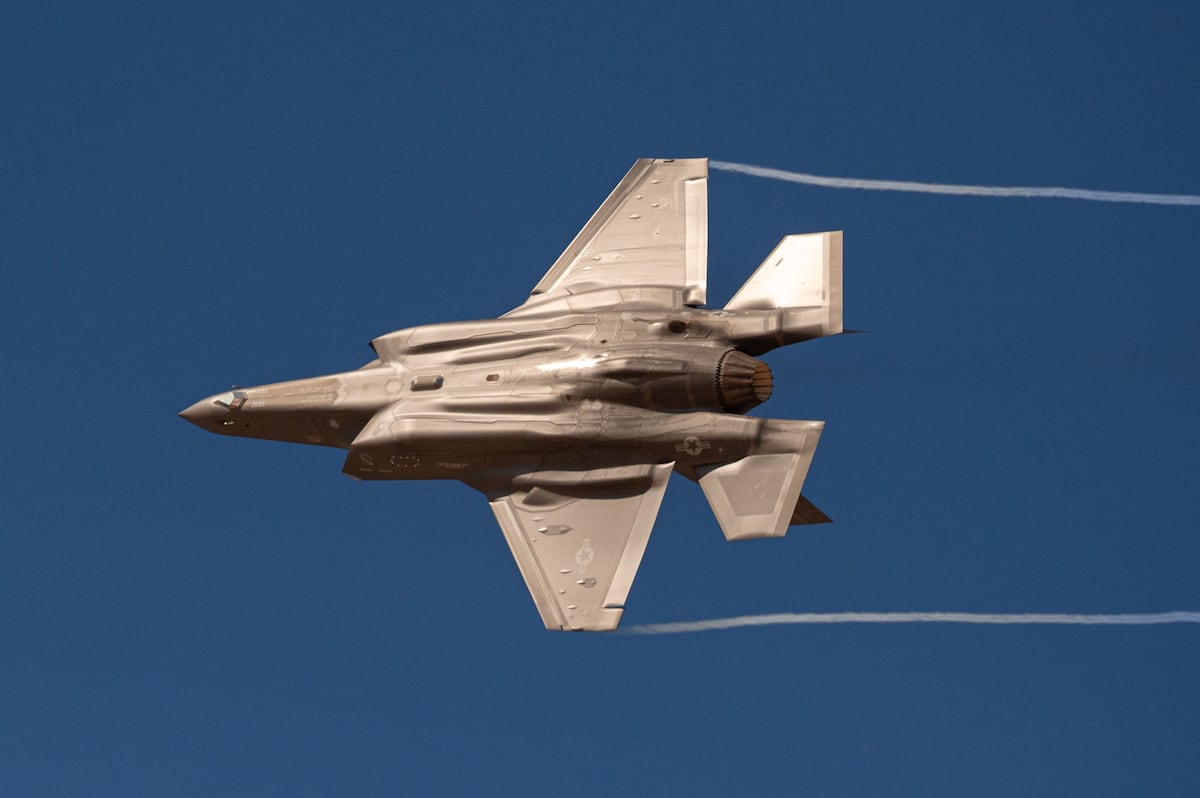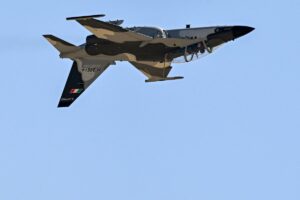Lockheed Martin Eyes Sixth-Generation Tech for F-35 Enhancements
Amidst increasing global defense demands, Lockheed Martin is gearing up to infuse its F-35 fighter jet with cutting-edge sixth-generation technologies. This ambitious upgrade plan aims to significantly boost the aircraft’s capabilities within the next few years.
During the Bernstein Strategic Decisions Conference held in New York, Lockheed CEO Jim Taiclet expressed optimism about introducing a “meaningful increase” in the F-35’s capabilities. These advancements are anticipated to be ready in approximately two to three years. Initially conceived for a Next-Generation Air Dominance (NGAD) fighter, these technologies were part of Lockheed’s proposal to the Air Force. However, the Air Force opted for Boeing’s proposal, resulting in the NGAD being designated as the F-47 earlier this year.
Lockheed’s strategy to enhance the F-35 involves incorporating NGAD technology to deliver up to 80% of the NGAD fighter’s capabilities at half the cost. Taiclet emphasized the potential of upgrading the F-35’s stealth features, including improved coatings to evade infrared and radar detection. Modifications to the fighter’s body, particularly around the engine inlets and outlets, aim to enhance its stealth profile.
Future iterations of the F-35, described as fifth-generation-plus, are expected to feature advanced electronic warfare capabilities, improved networking, and increased autonomy. This could enable the aircraft to operate with an option for pilotless missions. Additionally, some weapon systems designed for the sixth-generation aircraft may be integrated into the F-35’s arsenal.
Taiclet noted that while some of these advancements could be flight-ready in a few years, the rollout of new technologies must be gradual to avoid disrupting production. “You cannot introduce too much new equipment or too much new software at once, necessarily, without interrupting the production flow,” he stated.
Lockheed Martin is also exploring how the F-35 can better interface with other aircraft, including sixth-generation planes and drones, as part of the Air Force’s “family of systems” concept. “This is the way to look at the air superiority program of the future,” Taiclet said. “It’s not just plane-to-plane, what’s faster, what turns tighter, what’s got the longest duration of flight, but how it interacts and can interact with a wider ecosystem to create air superiority.”
Taiclet also provided updates on the F-35’s Technology Refresh 3 (TR3) upgrades. These upgrades include an improved core processor, enhanced memory, and a more sophisticated pilot display. The hardware development is complete, with production underway at L3Harris, and the software integration to tie these new components into the jet is also finished.
New F-35s are currently being outfitted with the TR3 hardware and software at Lockheed’s Fort Worth, Texas, facility. These jets will also feature a new distributed aperture system, consisting of six antennas around the jet to enhance sensing capabilities. This system is a precursor to a more extensive upgrade known as Block 4. However, integrating the new sensor set with TR3 has encountered delays, with Taiclet noting it is “a little bit behind schedule.”
Taiclet anticipates that the integration challenges will be resolved by the year’s end, making the aircraft combat-ready and suitable for deployment at front-line bases for allied forces.






